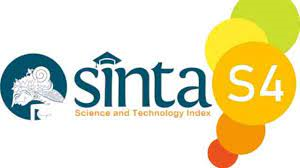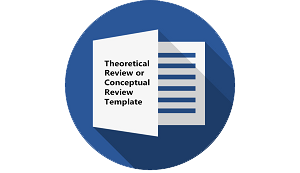Metaphor and Metonymy in Poems of Anne Sexton
DOI:
https://doi.org/10.30957/ijoltl.v8i3.755Keywords:
Keyword: Anne Sexton, Conceptual Metaphor, Metonymy, PoemsAbstract
This research investigates the significance of metaphors and metonymies in shaping cognitive comprehension of abstract concepts by analysing Anne Sexton’s poem “45 Mercy Streetâ€. The research method employed for this research is descriptive qualitative with Lakoff and Johnson’s (2003) conceptual metaphor framework to identify three types of conceptual metaphor and the metonymy concept structure. The data is taken from the collection of the poems within the third part entitled ‘The Divorce Paper’ consist of seventeen poems. The result of this study indicates that: (1) a total of twenty-four metaphorical expressions were detected, with varying distributions among the three types of conceptual metaphor, namely two of orientational metaphor, nine ontological metaphors, and thirteen structural metaphors. (2) seventeen metonymical expressions are found distributed in seven metonymy concept structure which are five ‘containers for content’, one ‘material for object’, one ‘controlled for the controller’, five ‘parts for whole’, two ‘places for events’, one ‘place for inhabitants’, and two ‘producers for product’
Downloads
References
Aloysia, D. A. M. L., & Utami, S. (2022). Majas dalam Puisi dan Lagu Karya Fiersa Besari. Linguista: Jurnal Ilmiah Bahasa, Sastra, Dan Pembelajarannya, 6(2), 86–107. https://doi.org/10.25273/LINGUISTA.V6I2.12580
Bauer, L. (2021). The Linguistics Student’s Handbook (2nd ed.). Edinburgh University Press.
Baxtiyor, S. V. (2020). Similarities and Differences between Metaphor and Similes in English. Theoretical Aspects in the Formation of Pedagogical Science, 258–260.
Bhat, I. M. (2019). Sylvia Plath ’ s Fits and Her Confessional Poetry. 6(2), 2348–2350.
Briggs, S. (2022, March 18). What is Linguistics and What do Linguists Study? A Full Guide. https://www.berlitz.com/blog/what-is-linguistics
Cenita, L., & Nurmaily, E. (2020). Metaphorical Expressions in Emily Dickinson’s Poems. Linguistics and Literature Journal, 1(2), 46–54. https://doi.org/10.33365/LLJ.V1I2.311
Chaerunnisah, I. U. (2020). An Analysis of Metonymy and Metaphor in Selected News Articles Related To Sports in the Jakarta Post. PRASASTI: Journal of Linguistics, 5(2), 153–162. https://doi.org/10.20961/prasasti.v5i2.40094
Chaturvedi, S. (2022). Suicide and Despair in Confessional Poetry. Quest Journals: Journal of Research in Humanities and Social Science, 10(1), 57–60. www.questjournals.org
Citraresmana, E., Erlina, & Amalia, R. M. (2018). The Concept of “Love†of Bandung Mayor-Ridwan Kamil Observed from Articles Published in Newspapers and Social Media in Indonesia Semantic Cognitive Approach. Jurnal Komunikasi: Malaysian Journal of Communication, 34(2), 278–292. https://doi.org/10.17576/JKMJC-2018-3402-17
Creswell, J. W., & Creswell, J. D. (2018). Research Design: Qualitative, Quantitative adn Mixed Methods Approaches. In Journal of Chemical Information and Modeling (5th ed., Vol. 53, Issue 9). SAGE Publishing.
Dixon, D. (2021). The Artistic Metaphor. Philosophy, 96(1), 1–25. https://doi.org/10.1017/S0031819120000273
Evans, V., & Green, M. (2018). What is Cognitive Semantics? Congnitive Linguistics an Introduction, 156–175. https://doi.org/10.4324/9781315864327-7
Fabb, N. (2015). Poetry. In What is Poetry? (pp. 1–16). Cambridge University Press. https://doi.org/10.1017/CBO9780511736575.001
Gibbs, Jr, R. W. (2018). Words Making Love Together: Dynamics of Metaphoric Creativity. In E. Winter-Froemel & V. Thaler (Eds.), Cultures and Traditions of Wordplay and Wordplay Research (pp. 23–46). De Gruyter.
Goddard, C. (2020). Cognitive Linguistics. The International Encyclopedia of Linguistic Anthropology, 1–5. https://doi.org/10.1002/9781118786093.IELA0059
Harvey, K. (2023). The Power of Poetry. Age and Ageing, 52(1), 1–2. https://doi.org/10.1093/AGEING/AFAC281
Heidarzadegan, N., & Shareef, S. (2021). Desire to Die in Poems of Anne Sexton and Stevie Smith. Atatürk Üniversitesi Sosyal Bilimler Enstitüsü Dergisi, 25(4), 1626–1640. https://doi.org/10.53487/ataunisosbil.945378
Hetmański, M. (2019). What is Specific in the Semantics of Metaphor? Ruch Filozoficzny, 75(2), 171–183. https://doi.org/10.12775/RF.2019.027
Hoque, M. E. (2019, August). Introduction to Language and Linguistics. International Conference of Language and Culture, Spain. https://www.researchgate.net/publication/335105265_Introduction_to_Language_and_Linguistics
Karunita, N. P. M., Winarta, I. B. G. N., & Juniartha, I. W. (2022). CONCEPTUAL METAPHOR IN THE POETRY ENTITLED LOVE SONGS BY SARA TEASDALE. PROJECT (Professional Journal of English Education), 5(5), 1016–1022. https://doi.org/10.22460/PROJECT.V5I5.P1016-1022
Khaleel, A. S. (2020). Confessional Poetry with Reference to Sylvia Plath’s Daddy. International Journal of Psychosocial Rehabilitation, 24(3), 5366–5373. https://doi.org/10.37200/IPR/V2413/PR2021135
Kövecses, Z. (2010). Metaphor: A Practical Introduction (2nd ed.). Oxford University Press.
Kövecses, Z. (2016). Conceptual Metaphor Theory. In E. Semino & Z. Demjén (Eds.), The Routledge Handbook of Metaphor and Language (1st ed.). Routledge. https://www.researchgate.net/publication/311403391_Conceptual_metaphor_theory
Kövecses, Z. (2018). Metaphor Universals in Literature. In Antares: Letras e Humanidades (Vol. 142, Issue 3, pp. 452–478). Magyar Neprajzi Tarsasag. https://doi.org/10.18226/19844921.V10.N20.10
Lakoff, G., & Johnson, M. (2003). Metaphors We Live By. The University of Chicago Press.
Lemmens, M. (2016). Cognitive Semantics. In N. Riemer (Ed.), The Routledge Handbook of Semantics (pp. 90–105). Routledge.
Levin, C., & Skorczewski, D. (2020). The Poetics of Boundary Violation: Anne Sexton and Her Psychiatrist. Psychoanalytic Dialogues, 30(2), 206–221. https://doi.org/10.1080/10481885.2020.1722569
Lin, Y. (2019). Why Cognitive Semantics Says Meaning Is Conceptualization. Journal of English Language and Literature, 11(3), 1127–1133. https://doi.org/10.17722/jell.v11i3.414
Littlemore, J. (2015). Metonymy: Hidden Shortcuts in Language, Thoghut and Communication. Cambridge University Press.
López Maestre, M. D. (2020). Gender, Ideology and Conceptual Metaphors: Women and the Source Domain of the Hunt. Complutense Journal of English Studies, 28, 191–206. https://doi.org/10.5209/cjes.68355
Majeed, S. H., & Dabbagh, L. A. (2019). A Cognitive Analysis of Metaphor and Metonymy in Selected Passages from Oscar Wilde’s Short Stories. International Conference on English Language and Culture, 27–33. https://doi.org/10.14500/icelc2019.dst138
Maoula, M., Simanjuntak, M. B., & Sihombing, J. (2022). Metaphor Analysis in Lost Stars by Adam Levine. Prosiding Seminar Nasional Inovasi Pendidikan, 0(0). https://e-proceedings.iain-palangkaraya.ac.id/index.php/PSNIP/article/view/795
Muliawati, E., Musthafa, B., & Novianti, N. (2019). Metaphors of Longing in the Selected Poems of Aan Mansyur’s There Is No New York Today (2016). Passage, 7(1), 36–59. https://ejournal.upi.edu/index.php/psg/article/view/21252
Nodira, U. (2023). Theory of Cognitive Linguistics. Best Journal of Innovation in Science, Research and Development, 2(4), 147–148. http://www.bjisrd.com/index.php/bjisrd/article/view/133
Pellicer, R. (2022). Introduction to Language Studies. In Language and Literacy Education Commons. The University of Texas Rio Grande Valley. https://doi.org/10.51734/mn0002
Radden, G., & Dirven, R. (2007). Cognitive English Grammar (Cognitive Linguistics in Practice). John Benjamins Publishing Company.
Rasse, C., Onysko, A., & Citron, F. M. M. (2020). Conceptual Metaphors in Poetry Interpretation: A Psycholinguistic Approach. Language and Cognition, 12(2), 310–342. https://doi.org/10.1017/LANGCOG.2019.47
Rivera, P. C. H., & Miguel, M. F. (2022). Representation of Feminist Ideology in Adrienne Rich and Anne Sexton’s Poetic Production. [University of Zaragoza]. https://core.ac.uk/reader/553004778
Safira, R. (2022). Conceptual Metaphor Analysis in the Dreams, Spelled in Poetry. Universitas Islam Negeri Maulana Malik Ibahim Malang.
Samola, N. F. R., & Lendo, S. (2022). Semantic Analysis on Metonymy Expression in Manado Malay. 7(March), 129–135.
Sanders, J. (2018). Introduction to the Topical Issue “Cognitive Linguistics and Theology.†Open Theology, 4(1), 541–544. https://doi.org/10.1515/OPTH-2018-0042/MACHINEREADABLECITATION/RIS
Sexton, A. (1976). 45 Mercy Street. In L. G. Sexton (Ed.), The Complete Poems: Anne Sexton. Boston Mass: Houghton Miffin.
Turakhonova, G. B. (2022). Theoretical Fundamentals of the Concept in Cognitive Linguistics. CURRENT RESEARCH JOURNAL OF PHILOLOGICAL SCIENCES, 03(01), 36–39. https://doi.org/10.37547/PHILOLOGICAL-CRJPS-03-01-07
Yastanti, U., Suhendar, J., & Pratama, R. M. D. (2018). Figurative Language in Song Lyrics of Linkin Park. Progressive, XIII(2), 12.
Zibin, A., & Hamdan, J. M. (2019). The Conceptualisation of FEAR through Conceptual Metonymy and Metaphor in Jordanian Arabic. International Journal of Arabic-English Studies, 19(2), 239–262. https://doi.org/10.33806/ijaes2000.19.2.1
Downloads
Published
How to Cite
Issue
Section
License
Authors who publish with this journal agree to the following terms:
- Authors retain copyright and grant the journal right of first publication with the work simultaneously licensed under a Creative Commons Attribution-ShareAlike 4.0 International License that allows others to share the work with an acknowledgement of the work's authorship and initial publication in this journal.
- Authors are able to enter into separate, additional contractual arrangements for the non-exclusive distribution of the journal's published version of the work (e.g., post it to an institutional repository or publish it in a book), with an acknowledgement of its initial publication in this journal.
- Authors are permitted and encouraged to post their work online (e.g., in institutional repositories or on their website) prior to and during the submission process, as it can lead to productive exchanges, as well as earlier and greater citation of published work (See The Effect of Open Access).












